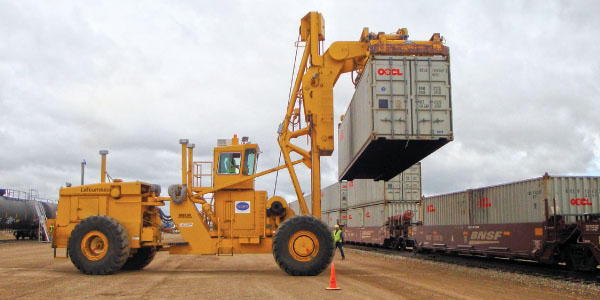How to Balance Export Demand

While much has been said about the United States’ anemic manufacturing sector and the stress it places on sustainable economic growth, agriculture exports are booming. The United States remains a net exporter of food and delivers half the world’s grain supply. In 2010, China became the largest export market for U.S. agriculture with soybeans, cotton, wood, grains, and seafood dominating the trade. That growth is expected to continue.
Shifting global trade dynamics and emerging export markets with explosive growth potential present U.S. growers and other industries with new challenges—as well as opportunities to create more efficient solutions.
In strong Midwest agriculture markets such as North Dakota, shippers have few transportation options. Many are limited to bulk railcar service to the West Coast, where commodities are containerized and shipped via steamship line to customers in Asia.
Demand for containerized control at point of origin helps reduce touches and facilitates handling in the domestic supply chain. There has never been enough eastbound volume into rural areas such as North Dakota, however, to justify the time and cost necessary to reposition assets from a high-volume container destination such as Chicago.
When drilling companies began tapping North Dakota’s rich oil field reserves—which coincidently lie below the state’s vast wheat fields—a few years ago, a new import demand was born.
Frac sand is used during oil and gas drilling operations to improve production flow from oil and gas wells. The manufactured frac sand is a ceramic proppant that is sourced and transported from Asia in containers. As demand for this commodity grew, a regional container network emerged that could support asset needs for both drilling and agriculture industries.
Working with the railroads and oil exploration companies, logistics intermediaries established services to deliver containerized frac sand eastbound from Asia, then reposition the containers to transport agricultural commodities back to Asia. This solution created balanced import and export customer demand to establish the appropriate level of container capacity in the market to support consistent, trainload quantities and service.
Multiple transportation options are available to transport frac sand into the North Dakota market, so logistics providers can pace inbound container volume to match forecasted export container demand. If, for example, more frac sand is coming in than grain moving out, some inbound containers from Asia can be transloaded into boxcars and hopper cars. North Dakota isn’t flooded with too much container capacity, and shippers avoid needless demurrage charges.
Taking Advantage of Shared Solutions
The North Dakota regional container network’s success, and accelerating demand for U.S. agriculture products, bodes well for other regions where complementary import and export container demand can coalesce into shared transportation solutions. Converting some railcar movements to container trains creates more flexible capacity for bulk freight commodities. These types of closed-loop networks also accelerate container turns, greatly improve asset utilization, and ultimately drive further economy.
